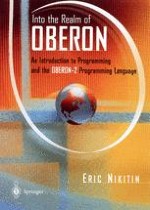1998 | Buch
Über dieses Buch
i.I Who Should Use This Book? Despite all that has been written about programming languages, there seems to be a no ticeable weakness-a scarcity of good material for beginners. Beginners could be those who would like to learn how to prbgram, but have never done it before. Or beginners could be those new to a particular programming language. Many programming language books and tutorials seem to assume that the reader has some prior experience, or that there is some sort of instructor present who can explain all the details that the tutorial leaves out. This book, however, is written with the intention of making the learning experience for novices as painless as possible. I have tried to keep my assumptions about prior knowledge to a minimum-although, as with anything, some assumptions need to be made. I do assume that the reader has minimal knowledge about how to use a computer (typing in text, selecting menu items-that sort of thing). This book is not just for those who have never programmed, but also for program mers new to the Algol/Pascal "family" of languages. Since many general concepts are foreign to those fluent in other programming languages, and problems are often ap proached in a different manner, even experienced programmers might want a basic and straightforward explanation of language structures.
Anzeige
